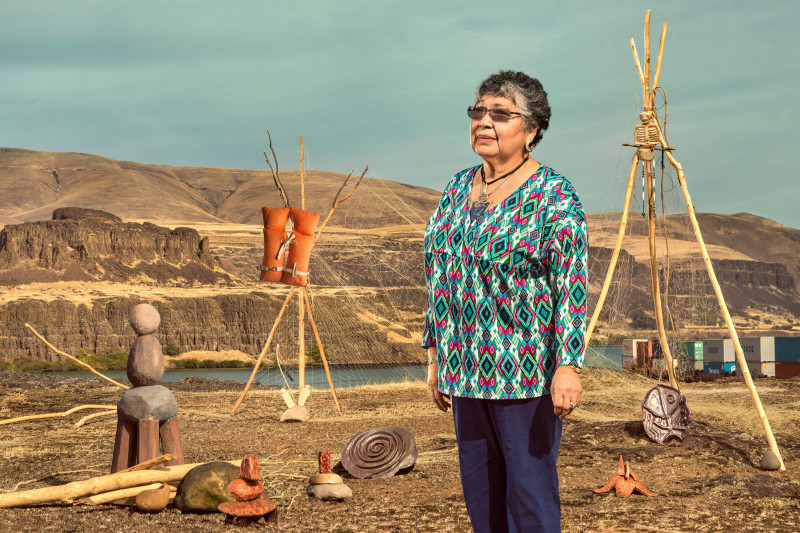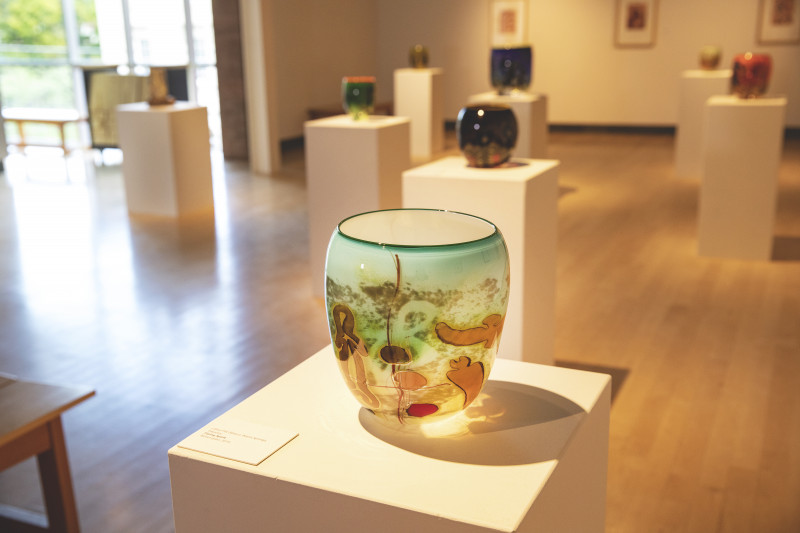Lillian Pitt: Honoring My Ancestors
September 19 2019 - February 21 2020
Drawing Upon 10,000 Years of Native American History
Lillian Pitt presents her newest artwork in Honoring My Ancestors, a solo exhibit opening at MAM in September. Pitt is celebrated nationwide for making contemporary artwork in the deep tradition of Pacific Northwest Native American artists. Recent works in the exhibit include prints, masks, and a new series of Sally bags. Traditionally, a Sally bag was a woven basket used to gather roots, medicines, nuts and seeds by Native American women of the mid-Columbia River region. The weaving technique is unique to this region with distinguishing motifs of human figures and animals. Created in blown glass and adorned with traditional shapes and symbols, Pitt’s richly colored Sally bags honor the cultural legacy of her ancestors from the Wasco, Warm Springs and Yakama nations as contemporary artworks.

Pitt, born in 1943 on the Warm Springs reservation in Oregon, grew up not knowing very much about her ancestors or the traditional art of her people. Her parents lived at the time when Indian children were sent to boarding schools that stripped their culture and tried to force assimilation to the white settler way of life. “And so my father grew to think that we would be better off if we tried to be less Indian. He felt that being less Indian could help his children have more comfortable lives,” Pitt explains.
It wasn’t until she was in her 30s that Pitt learned her ancestry in the Columbia River Gorge dates back more than 10,000 years. She was already working as an artist, but searching for her focus and artistic identity. An elder brought her to see the rock carvings and pictographs made thousands of years ago by her ancestors. This epiphanic experience set the course for Pitt’s long, influential career. Her experience seeing the painted and carved rock was a true revelation. “I couldn’t get over how interesting these rock images were” she says. She spent much of her early years as an artist “learning about my ancestors and studying the designs that they created. I learned everything I could about their rock carvings, their baskets, beaded bags, dresses, the tools they used.”
In the past four decades Pitt has become a celebrated contemporary artist. She is comfortable working with numerous materials and media in all scales. Though primarily a sculptor, Pitt is also a printmaker and jeweler. No matter the medium, her work always pays homage to her ancestors. She is probably most renowned for the masks made with various materials including cast bronze, glass and clay. Her series of mask portraits honors the first rock painting she saw, Tsagaglalal (She Who Watches). The mixed media sculptures depict animals and people and sometimes the mystical combination of the two. “Regardless of the medium,” the artist states, “and ever since my early years as an artist, my work directly relates to and honors my ancestors, the environment, and the animals.”


